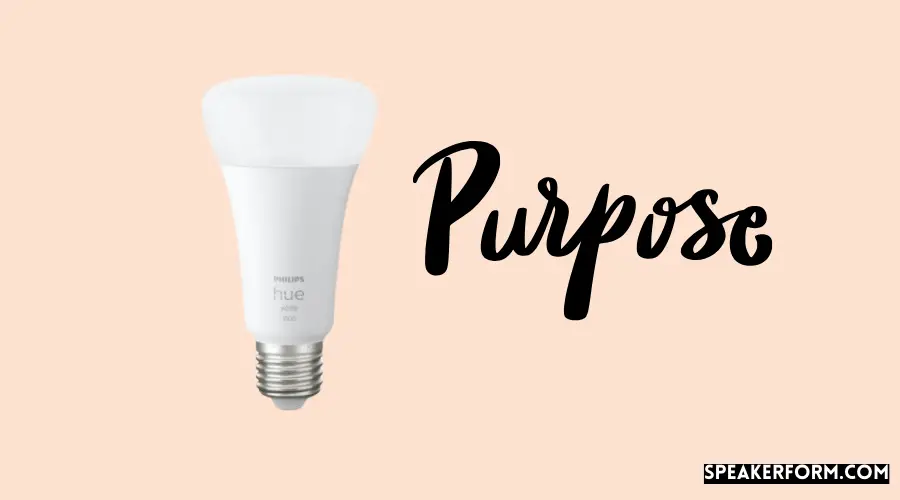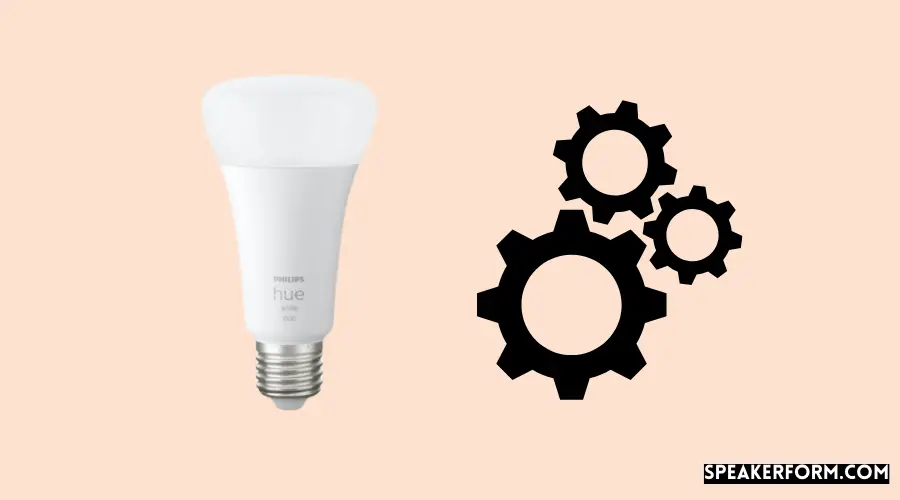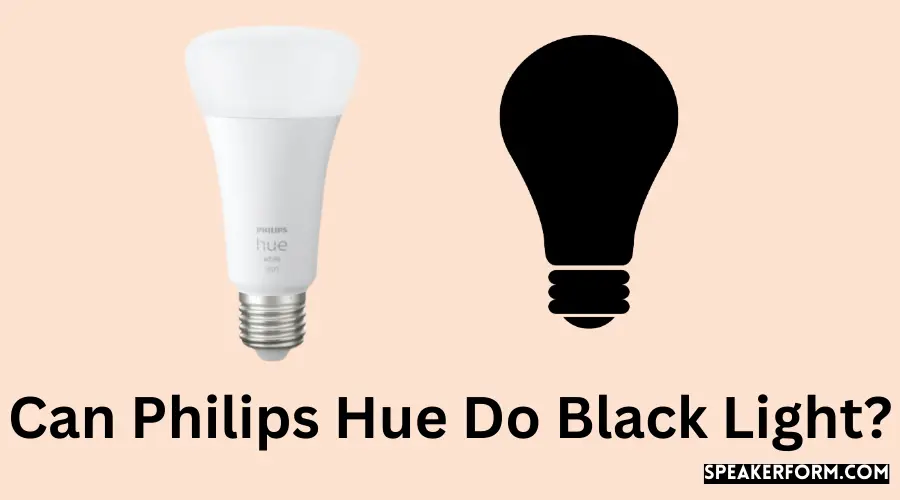Various applications, ranging from security to celebrations, rely on the usage of black light. These lights produce a fluoresce reaction when exposed to ultraviolet-A wavelengths, which allows them to glow in the darkness. Similar images can be found on black light posters at party supply stores and when getting your stamp checked after re-entering a concert.
It is possible that switching from standard illumination to black light will be an interesting twist on traditional lighting practices. Black lights are ideal for any event, whether you’re planning the finest Halloween party your town has ever seen, or you want to recapture the glory days of black light posters. In the age of smart lighting, is Philips Hue up to the challenge of coping with this resurgence in the use of party lights?
Because Philips Hue lights do not create black light in the traditional sense, the short and dirty reality is that they do not work. You can design your Philips Hue lights to approximate the “black light blue” or violet color of a true black light, but they do not release enough UV-A light to create the fluorescent effect.
What exactly is the Philips Hue lighting system, and how does it function in practice?
Philips Hue is a smart lighting system as a whole, rather than just a brand of smart lamps (with over 90 different types to choose from).
The Bridge serves as a central hub, bringing all of the Hue smart lights together in one convenient location. Upon completion of the installation, they are connected to the Hue app, which allows you to control your entire lighting system from both inside and outside of your home. The number of Hue devices that can be connected to a single bridge is limited to 50. Product offerings from Philips Hue include everything from smart LED strip lighting to outdoor lights and motion detectors.
While we’re on the subject of black lights, let’s take a look at the three primary varieties of Hue smart lights that are now available on the market.
The Hue Lights are available in three different designs to suit your needs.
There are three types of Hue smart lights, each with their own classification. Any Philips Hue smart lighting setup will require at least one of these components. Despite the fact that each of these lights has its own set of advantages and disadvantages, none of them is capable of dealing with true black light. Let’s take a brief look at the functionality of each of these lights and see what they can and cannot achieve in terms of performance.
I received two Hue White lights as part of my Hue beginning package.
A touch of blue can be seen in the hue white.
Essentially, this is a standard white light bulb with a standard shape. When it comes to vital functions such as “on/off” operation and dimming, this device takes care of them all. It is impossible to change the hue of these lights since they are stuck in a warm white color space.
This light is suitable for use in a variety of interior and external environments.
A white-hued atmosphere can be found here.
The Hue White Ambiance light collection, on the other hand, is significantly more favorable. A significant improvement is that it now offers both warm white and cool white finishes as options.
The Hue app displays the color wheel/picker for a White Ambiance light, which may be customized.
In any interior design project, this light would be a fantastic addition. The ability to quickly switch between warm and cool white settings makes it simple to ensure that your internal always look the way you want it to look. This is especially relevant when comparing the natural light you receive during the day to the natural light you receive at night, which may be more yellow at night and more blue during the day, depending on the time of year.
You can even adjust the illumination to match your mood by selecting from a variety of chilly and warm settings.
Color, hue, and ambiance are all important aspects to take into consideration.
We’ve finally made it to the top of the standings.
In this light, there are 16 million different hues to choose from. In order to exhaust all of your options, you would have to try a new color once a day for the rest of your life, which would take more than 43,000 years:
Hue Color bulbs are shown in this screenshot from the Hue app, which offers an RGB color wheel for Hue Color bulbs.
These lights can be programmed to meet any need that arises. It has it all, whether you’ve built the best gaming room in the world and need strong LED lights to match, or you’re looking for the right blend of blue and white to truly make your décor stand out.
There is one exception to this rule, though. Even though this lamp has the appearance of a black light, it does not perform in the same way as a true black light does.
What exactly is the purpose of these LED lights?

The Philips Hue Lightstrip V4 makes use of diodes to illuminate the room.
LEDs are employed in all Hue lights, which means they are made up of little lighting ‘chips,’ as the name suggests. Listed below are some examples of the colors that these gadgets are capable of producing:
- Red diodes are diodes with a red tint on their surface.
- Blue diodes are those that have a blue tint to them.
- Green diodes are diodes that have a green hue to them.
- Cold and warm white diodes are also used to ensure that any ‘white’ hues are produced in a high-quality, natural manner – rather than by mixing other colors – rather than through the use of filters.
There are numerous ways to power these diodes, allowing us to make virtually any color we can think of. With the exception of black light, of course.
Is it a possibility for them to use black light?
Hue lights can perform black light functions on their own to some level, and we’ll get into that in more detail later when we discuss how to build a smart black light. However, for the most part, Hue lights are unable to perform black light functions on their own.
When compared to ordinary illumination, black lights operate in a somewhat different manner. In order to suppress visible light while allowing UV-A light to pass through, they apply a unique coating to the lens. The reason why items sparkle brilliantly when exposed to black light but just weakly when exposed to regular light is explained by this phenomenon.
Because our eyes are not very sensitive to ultraviolet A (UV-A), we must observe the fluorescence of a black light in an exceedingly dark environment in order to perceive it.
How Does Using a Black Light Affect the Environment?
You will get more technically literate the more you learn about it, and the more you learn about it, the more technically literate you will become.
At its most fundamental level, an ultraviolet A light source emits mostly ultraviolet A light. The fluorescence of objects is caused by the emission of this wavelength of light. This is the glow that you’ve noticed on items and paints after they’ve been exposed to black light, and it’s caused by a chemical reaction. UV-A light can be hazardous if exposed to it for an extended period of time; however, it does not cause sunburn in the same way as UV-B light does.
Currently, there are two types of black lights available on the market. Two types of black lights are offered: technical Black Light Blue lights for use in technological applications and less powerful conventional black lights for general use.
When creating Black Light Blue lights, the glass used is a specific type of glass known as a wood lamp. This type of glass blocks virtually all non-UV-A light from passing through completely. The bright blue color of these lights is a striking contrast.
Alternatively, when a regular black light bulb is used, a violet colored casing is placed over the light source to produce a similar impression, however the light is much dimmer. The vast majority of the time, these black lights will be adequate for usage at parties and other similar occasions.
DIY experiments such as wrapping a flashlight in purple and blue cellophane wrap can be carried out at home in order to make one of these less powerful black lights, according to the manufacturer.
Knowing how black lights function, what kind of results can we expect from a Hue smart light now that we understand how they work?
Philips Hue is capable of producing light that is as close to total darkness as possible.
Despite the fact that there are no Hue bulbs that can offer absolute black light at the time, we can get very close with certain tricks.
In order to use Hue lighting, we must use the CIE color space, which implies that we cannot simply enter RGB or hex values, which are often used in graphic design to select colors, as we would otherwise. The Hue app, on the other hand, provides a very straightforward method of selecting colors.
A Hue bulb or an LED strip will be required for this, depending on your preference. Make sure it is a full Color Ambiance bulb rather than a white or white Ambiance bulb for best results in this use. Ensure that all of your lights are operational by connecting them all together and checking them again. Afterwards, our lighting will be changed to deep violet or electric blue tones to make way for the evening. If you’re using multiple lights, be sure to alter the colors somewhat from one to the next, as the colors of black lights have a propensity to differ dramatically from one to another.
Alternatively, if you have Siri installed on your phone, you can ask Siri to adjust the lighting to “electric purple” in order to achieve this effect. Another set of “Lavender” settings is available in other apps and gadgets, such as Alexa and Google Home, that produce a similar effect.
Used in conjunction with black light, it generates the same effect as black light, only it does not have the cold side effects. The UV-A rays have a vivid effect. These settings should be adequate to provide a faint fluorescence effect in your room, depending on how bright your lights are and how sensitive your UV-A reactive décor is. If you have any questions, don’t hesitate to get in touch with us.
Is there a smart light that can be used in low-light settings and still function?

No, not really. The market currently has a number of LED black lights available, including one from Philips, however there are no smart lamps that can emit UV-A black light at this time. There are a number of solutions available that accomplish the same functions as a smart black light, but they necessitate the use of additional processes in order to be effective.
We’ll connect your black light of choice to a Philips Hue Smart Plug in order to turn a basic black light into something more sophisticated. It takes only a few minutes to transform your existing light fixtures into smart light fixtures when you use this adapter:
Despite the fact that the Philips Hue smart plug has been unpacked, it has not yet been connected to a power source.
To control any black lights that are connected to this socket, you can use the Hue app on your smartphone to turn them on and off. This will offer you with the most crucial feature of a genuine smart light: the ability to turn it on and off intelligently. However, it will not allow you to modify the color of the light or lessen the amount of light that is emitted. The ability to lower the lights is unfortunately only available on a few smart outlets.

